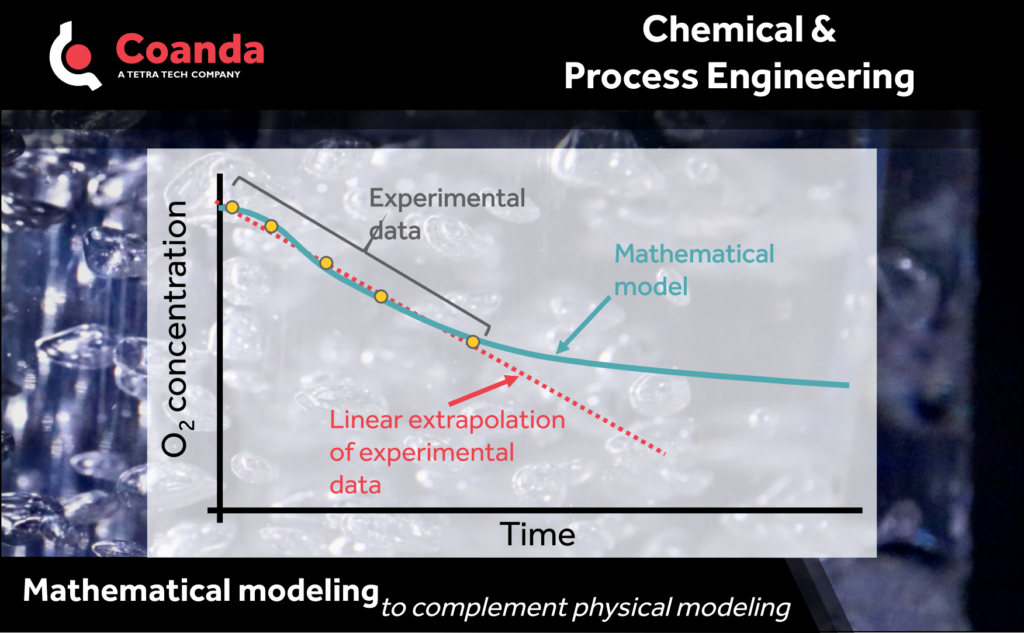Mathematical & Physical Models
Posted on March 26, 2024 Chemical & Petrochemical
Well-designed experiments can tell you a lot about a process: which parameters matter, how it scales, etc. Experiments can be tricky, however – the full parameter range of interest may not be accessible; test work takes time; simplifications to the process or materials may also be needed. Experimental data can also lead to misleading conclusions sometimes if the underlying physics are not considered.
For example, consider bubbling a trickle of nitrogen up through oxygen-saturated water. A set of measurements show oxygen concentration at a given height in the water decreasing, as expected. How would you extrapolate this over time? Given the experimental data alone, linear extrapolation seems reasonable.
If the nitrogen flow is small enough, however, the oxygen stripped out by the bubbles is comparable to the amount diffusing back in from the air above; linear extrapolation of the data would be wrong. A physics-based mathematical model of the mass transfer process captures the non-linearity in this case, which could be confirmed by experimental measurements after longer times, as suggested by the model results.

Mathematical models can provide important physical insights, in addition to overcoming the limits of experimental work described above. They can also be used for sensitivity analyses and to guide experimental testing. Models can range from simple, physics-based models to more complicated or empirical ones. Complex models that capture all aspects of a commercial process are often not required. Something as simple as a 1D transport model can be sufficient to capture a process well enough to understand what is going on.
A few considerations should be kept in mind when developing mathematical models:
- Models need a well-defined physical basis from theory or empirical data. Limitations from assumptions, correlations, etc. should be identified.
- Experimental validation is crucial to ensure a model describes the system well.
- Results should be sanity-checked against real data or experience to ensure the important aspects of a system are captured.


